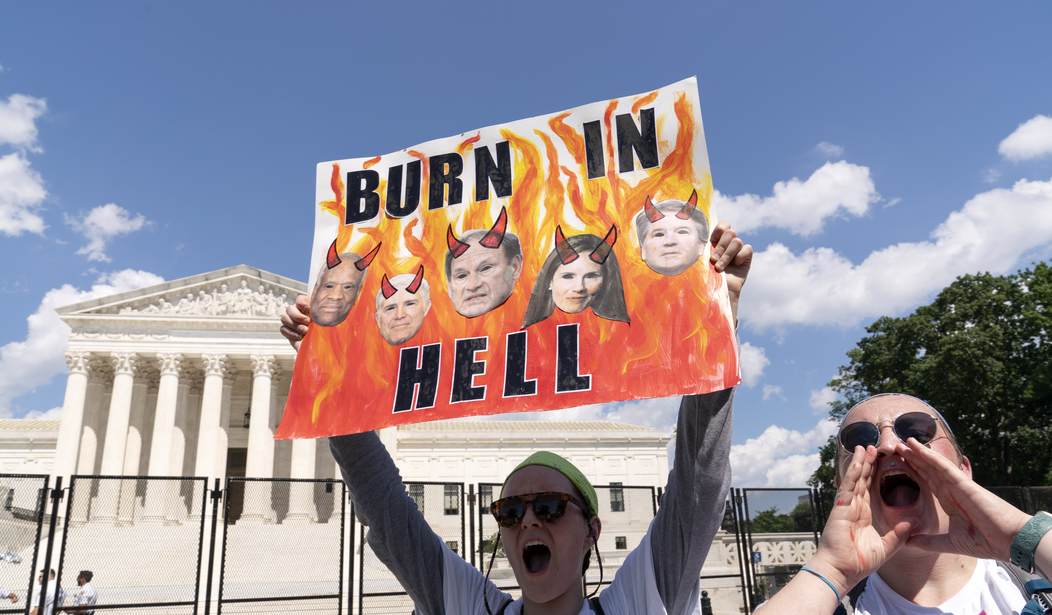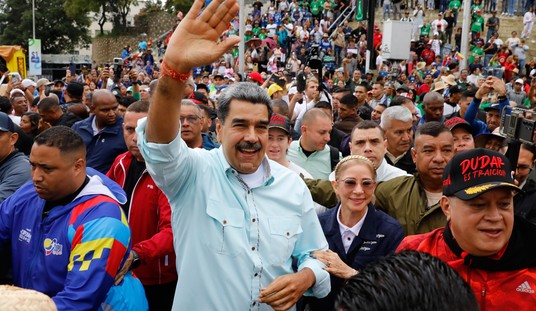The leak of the Dobbs decision last year was probably the worst breach in the history of the Supreme Court. The case was already highly contentious as it would decide the fate of Roe v. Wade, a wrongly decided and legally shoddy opinion that blew up the abortion debate in 1973.
States were already moving toward a consensus—Roe ended that, with even the late Ruth Bader Ginsburg admitting that it went too far. Even the most ardent abortion supporter in the field of the law knew this decision wasn’t on a solid legal footing. Its activist base certainly knew that, which explains why every Supreme Court nomination devolves into a dogfight when the conservative-liberal composition threatens to be upset.
At any rate, the Dobbs opinion was leaked to Politico, setting off protests and attempted assassinations of conservative jurists. Did the nation burn? Blessedly not, but the damage was done to an institution that prides itself in being isolated from the wants of society, as it’s not their job. The Marshal of the Supreme Court led a months-long hunt for the leaker—and couldn’t find the culprit.
Or was it that the Marshal gave up on finding the perpetrator? That’s a debate for another time, but one shocking thing is how there haven’t been more leaks from the Supreme Court. Spencer outlined the 23-page report from the marshal over at Townhall, which painted a damning picture of the security situation at one of the most reputable institutions in American government. The number of people accessing highly sensitive documents is extensive, something the marshal said must be updated. Since these aren’t state secrets, there are no protocols for handling these files. And, of course, the information security guidelines currently in place are antiquated. More disturbing was that out of the 100-plus Supreme Court employees interviewed, almost everyone didn’t seem to comprehend the Court’s confidentiality procedures. Even the methods by which confidential court documents are destroyed were flagged as inadequate. Regarding its security measures, the Supreme Court was Swiss cheese.
The lack of leaks could be due to its workforce understanding and honoring the institution’s prestige that this was a branch of government that didn’t get into the partisan gutter. It was isolated from the noise so that “lawyer’s work” could be conducted. Clerks from both liberal and conservative jurists once honored that principle, along with establishing an ironclad web of trust, so perhaps many of the faults outlined by the marshal were not necessary. Yet, times have changed for the worst.
The findings also concluded that after 126 interviews with 97 SCOTUS employees, nothing could be pinned on anyone to elevate them to a person of interest. Phone records and billing statements were also turned over voluntarily for review; nothing eye-popping was discovered, along with zero digital evidence that the court’s electronic system was used to leak the draft illegally. Still, 82 people had access to the draft, and while several employees didn’t follow proper procedures regarding safeguarding confidentiality, nothing popped out to investigators. Social media history and interactions with SCOTUS employees and DC media outlets were traced and analyzed. Again, nothing incriminating was found. One clear violation found was that some employees told their spouses, which is a violation of protocol, but how did Politico get it? It’s been chalked up as a potential negligent disclosure, like someone leaving it out in an office or any public space inside or outside the complex.
That the draft opinion could have been left out and picked up by the custodial staff is within the realm of possibility. It just seems that any investigation that could pinch a liberal seems to either come up short or end prematurely. There was an alternate theory that if a clerk leaked it to the press, it wasn’t a raging liberal but a moderate staffer on the conservative wing.
The Supreme Court’s security measures regarding documents and the destruction of sensitive files are wholly inadequate, which woke staffers can and will exploit if nothing is done to remedy the situation, so let’s pray a procedural overhaul is in the works. Yet, it seems almost inexcusable that nothing definitive was found. No one could remember leaving the opinion open, even if the disclosure was inadvertent. They may lose their job, but the lack of a conclusion will only fan the flames of conspiracy. Who or what was behind the most humiliating and damaging leak in the high court’s history? That must be answered.
The institution should be impervious to public opinion, which is why I chuckle when I see how many liberals don’t like SCOTUS now that there’s a solid conservative majority. The legislature is supposed to handle the needs and wants of society, not the Supreme Court, which is a window into the world of liberalism, which thinks unelected judges should create policy. Some think this investigation should continue under the purview of the Federal Bureau of Investigation.
Yes, that would be the logical move in ordinary times, but the FBI is the Democrats’ errand boy now. They can’t be trusted, and they might not have time to conduct a new review since they’re busy running interference for Joe Biden about Hunter and trying to mitigate the president’s current fiasco regarding how he recklessly handled state secrets for years, storing them unsecured at multiple locations, including his home in Wilmington, Delaware.
The lack of accountability means only one thing: Supreme Court leaks will happen again, which means this institution that isn’t made for the political battlefield is now thrust onto it. The irony is that the one man who turned the court system, at least the nomination part, into a circus was Joe Biden. So, this leak is Joe’s fault.







